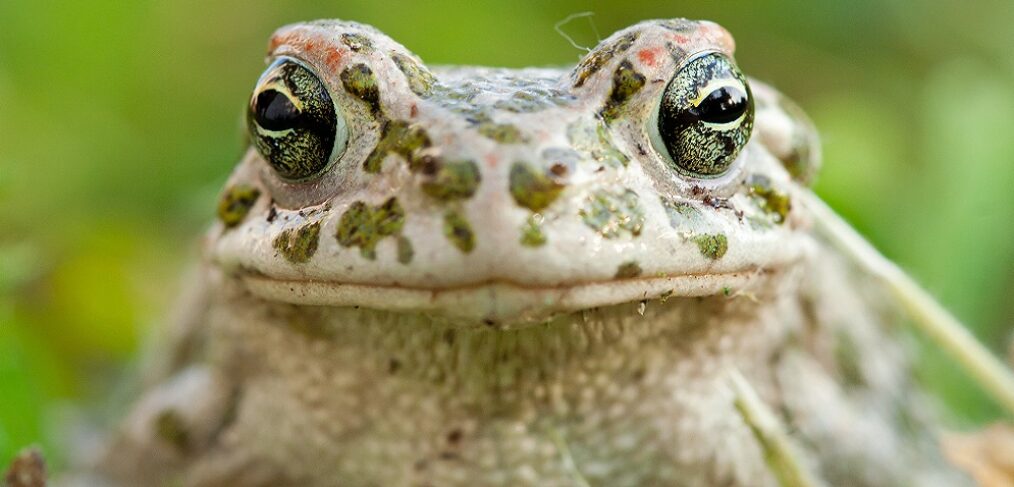
Species of the week #123- European green toad
The green toad has a special characteristic: it can change its appearance depending on the colour of its surroundings and become lighter or darker. This makes the toad difficult to spot when it is at rest. But it is also very changeable in other respects. For example, it can live in one place for years and then suddenly take off for no apparent reason, wandering for miles in search of a new home.
What particularly annoys her predators is that she can also transform herself from a tasty morsel into a smelly, bitter prey. By means of a bitter secretion, which it can release through its skin in case of danger, it becomes absolutely inedible.
|
Distribution status in Rhineland-Palatinate
|
critical endangered
|
|
Remaining occurance
|
Haardtrand to the Rhine and Neuwied Basin |
|
Last sighting in Rhineland-Palatinate
|
summer 2022
|
|
Habitat
|
Sunny, sandy floodplains and riverine landscapes, also temporary water bodies, sand and gravel pits |
|
Threat
|
Habitat loss in floodplains, filling of small water bodies, fertilisation |
With a maximum total length of 90 mm, the crepuscular and nocturnal green toad is a medium-sized toad. A characteristic feature of the species is a sharply defined greenish spot pattern on the otherwise whitish-grey coloured back. It eats mainly crawling and scuttling insects such as earthworms, ants, beetles, spiders and slugs.
The western range limit runs along a line from western North Rhine-Westphalia, Rhineland-Palatinate, Saarland and north-eastern Lorraine. Eastwards, the range extends to Kazakhstan, southwards across north-eastern Italy to Crete.
The presence of open, vegetation-poor to -free areas with sufficient hiding places as terrestrial habitat, as well as largely vegetation-poor waters, are prerequisites for the existence of the species.
As a distinct cultivator, the European Green Toad nowadays prefers anthropogenic, sunny habitats such as earth outcrops (e.g. sand and gravel pits), fallow and ruderal areas with little vegetation, railway embankments as well as gardens, fields and farmland. Like the Natterjack Toad, the Green Toad also needs temporary small water bodies, some of which warm up very quickly and strongly. Food competitors and predators can prevent the establishment of Green Toads. Sunny, shallow pools with little vegetation, but also medium-sized water bodies and rainwater retention basins in the vineyard landscape serve as spawning grounds for the green toad.
The green toad’s spawning grounds are sunny shallow pools with little vegetation, but also medium-sized bodies of water and rainwater retention basins in the vineyard landscape.
Today, these migrations are dangerous for the toads, as they often have to cross roads. Moreover, they hardly find suitable habitats any more and are therefore on the lookout for much longer. Almost all suitable watercourses have been canalised, floodplain pools and gravel banks have disappeared. The intensification of the use of larger water bodies, the filling in of smaller water bodies and the intensification of the use of terrestrial habitats have also taken their toll on the green toad, despite its great adaptability. Since the last all-German Red List, the population of Green Toads, as well as Natterjack and Midwife Toads, has further deteriorated, mainly due to habitat loss.
Political necessity:
– More intensive floodplain protection
– Conservation of small and very small water bodies
– Riparian strips also for small bodies of water
– New road construction only in absolute exceptions, minimise expansion
Click here for more exciting species of the week
Photo: By Umberto Salvagnin – originally posted to Flickr as Green Toad, CC BY 2.0, https://commons.wikimedia.org/w/index.php?curid=11009538
